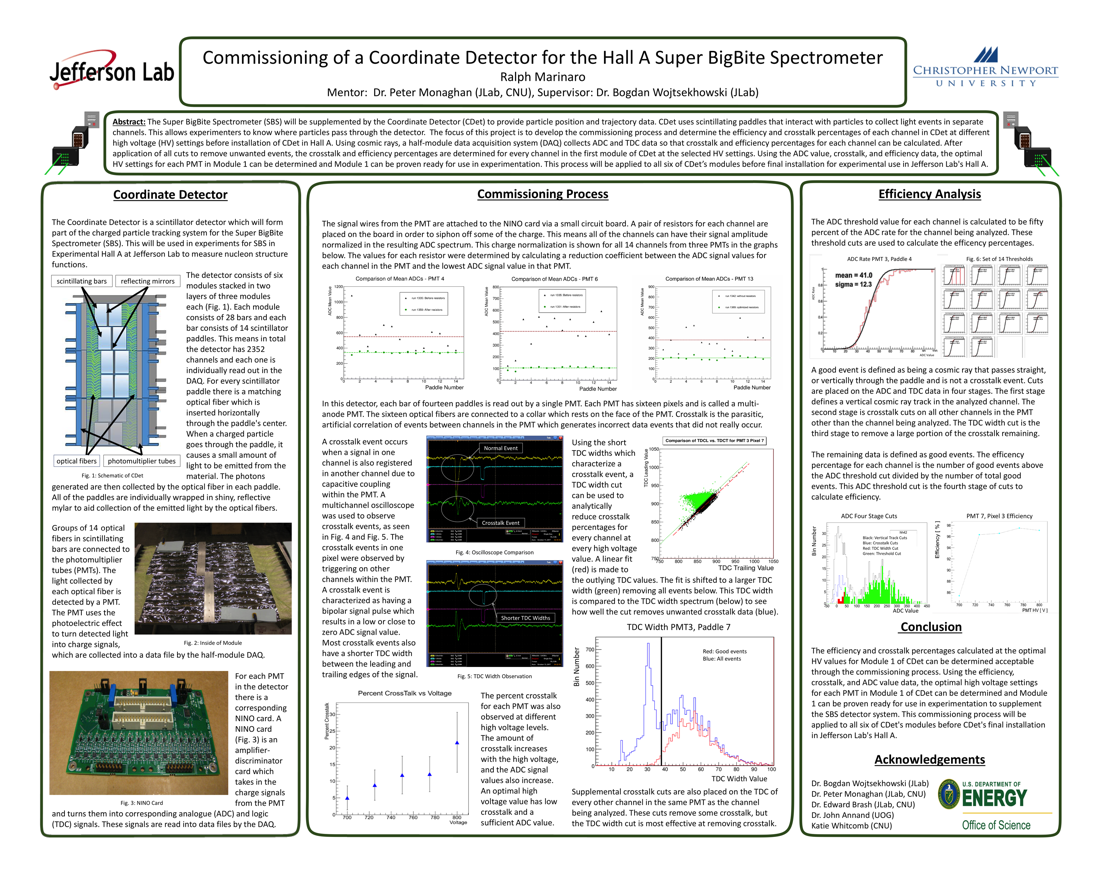Undergraduate Research at Jefferson Lab
Commissioning of a Coordinate Detector for the Hall A Super BigBite Spectrometer
Student: Ralph Marinaro
School: Christopher Newport University
Mentored By: Peter Monaghan
The Super BigBite Spectrometer is a Hall A collaboration project that will measure nucleon structure functions and will be supplemented by the Coordinate Detector (C-Det) to provide particle position and trajectory data. C-Det utilizes 4 mm wide scintillating paddles in groups of 14, called bars, comprising two layers of three modules each offset to match the scattering of particles from the target. Particles collide with thin scintillating paddles creating a shower of photons and these light events are collected by optical fibers inserted in the paddles. Multi-anode photomultiplier tubes (PMTs) convert the events in each bar into charge signals which are collected by a half-module data acquisition system; testing one-half module at a time. The focus of this project was to develop the commissioning process and determine the efficiency of each channel in C-Det at different high voltage (HV) values before installation of C-Det in Hall A. Using cosmic rays, mean ADC signal values for the 14 channels in each bar are calculated using a Gaussian fit on the ADC spectrum and these mean ADC values are normalized to the lowest of the 14 values by installing resistors in connector boards between the PMTs and NINO amplifier-discriminator cards. The crosstalk, which is the parasitic, artificial correlation of events between channels, ratio was calculated at different HV values for each channel using the number of crosstalk events over the number of total events and this ratio is reduced analytically using a TDC signal width cut since most crosstalk events occur at smaller TDC widths as observed on a multichannel oscilloscope. After application of all cuts defining a good event, the efficiency ratio of each channel is calculated by taking the number of events above threshold, set at fifty percent, over the number of events below threshold for each HV value. It was found that through this process, C-Det can be commissioned for use in experimentation. After application of all cuts to remove unwanted events, every channel in the first module of C-Det has crosstalk and efficiency percentages which are considered acceptable for the commissioning process. Using the ADC value, crosstalk, and efficiency data, the optimal HV settings for each PMT in Module 1 were determined and Module 1 is proven ready for use in experimentation. This process will be applied to all six of C-Det's modules before installation in Jefferson Lab's Hall A.

Citation and linking information
For questions about this page, please contact Education Web Administrator.
